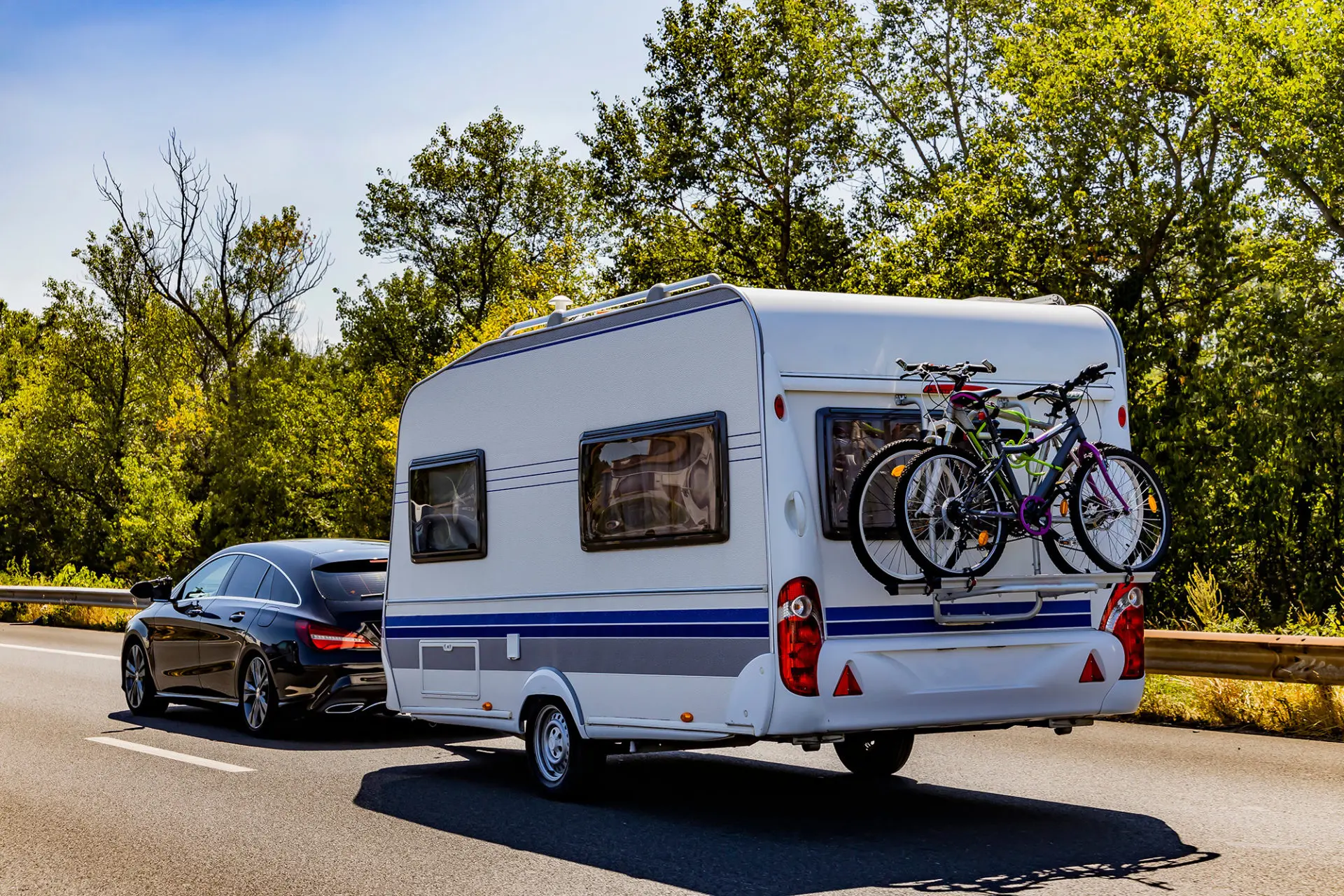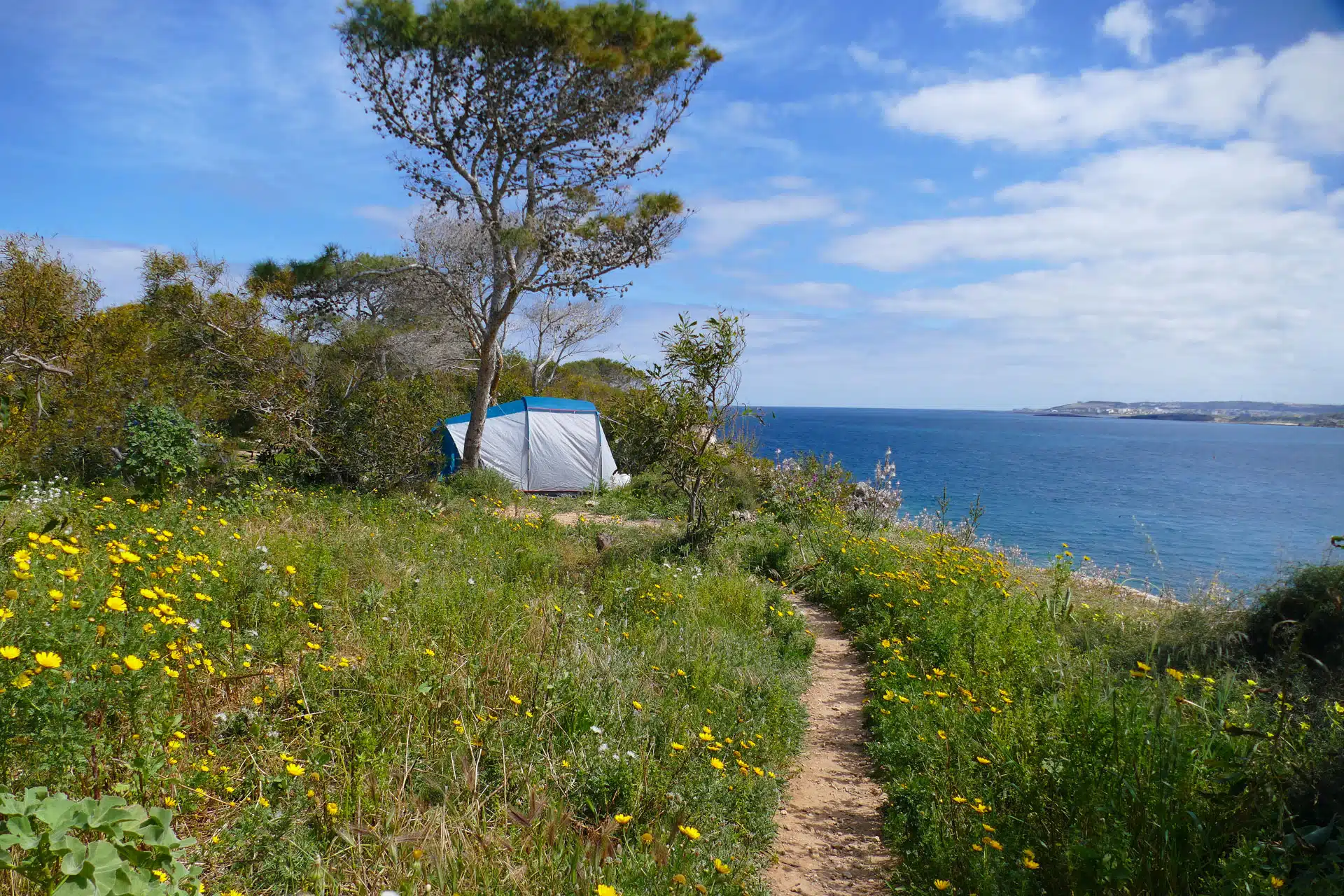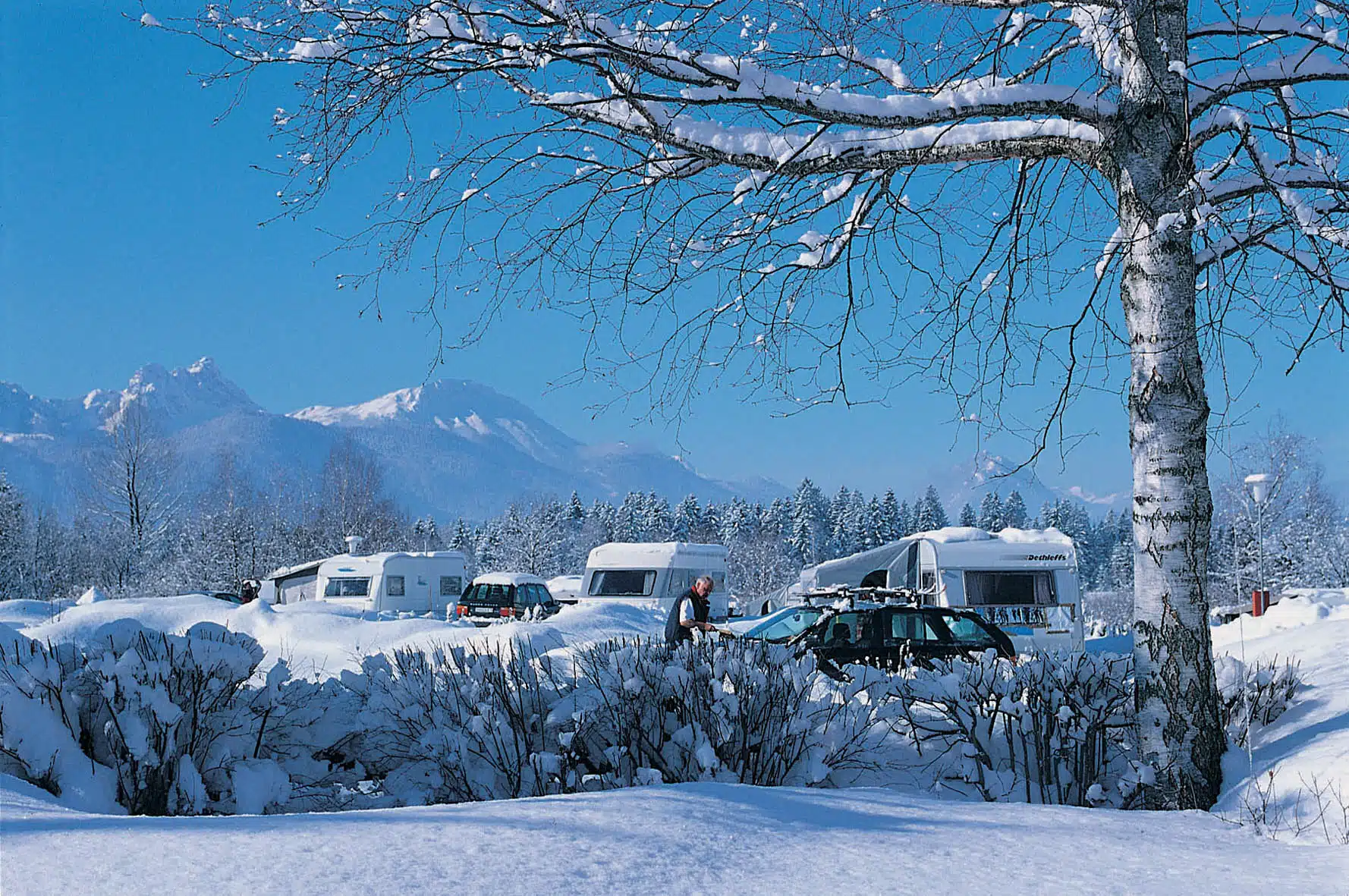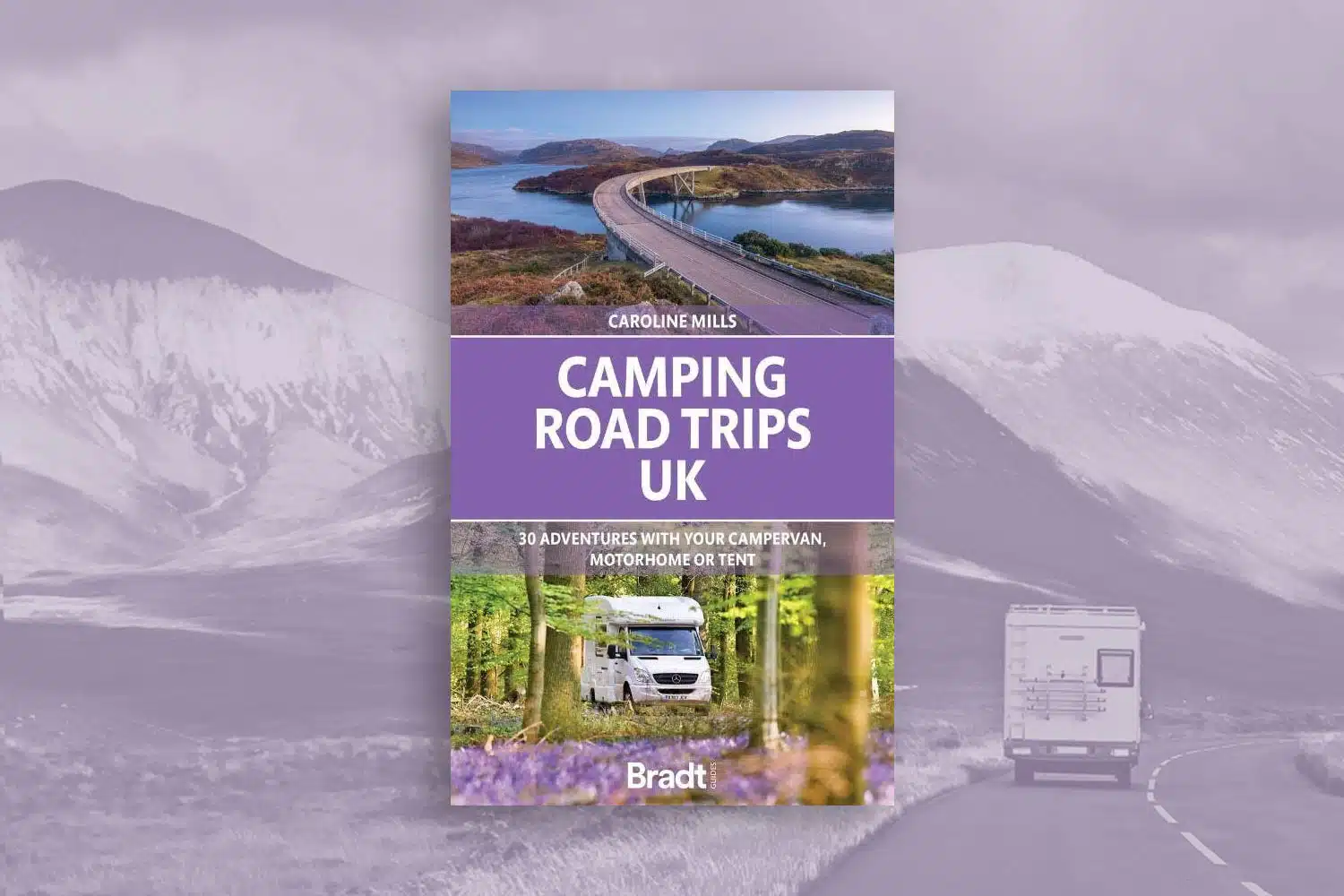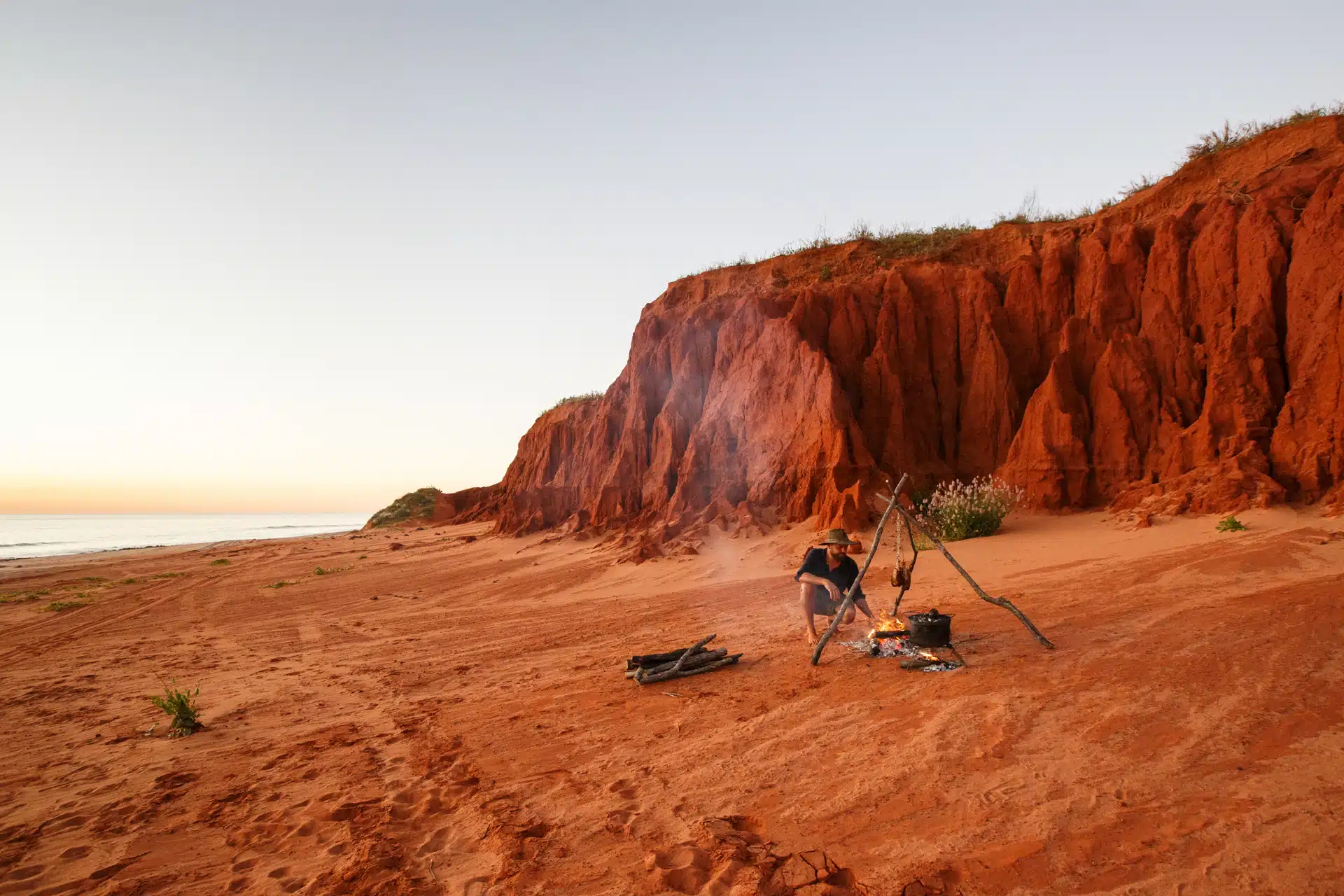If you want to experience the freedom, fun and flexibility that comes with owning a caravan, you will need to be confident in driving and manoeuvring your home on wheels. Touring magazine brings you this how-to guide on everything you’ll need to know about how to tow a caravan
Learning how to safely tow a caravan is not difficult, but it can be daunting at first. Follow these expert tips and you’ll find that with some careful planning and common sense caution you will be on the road in no time.
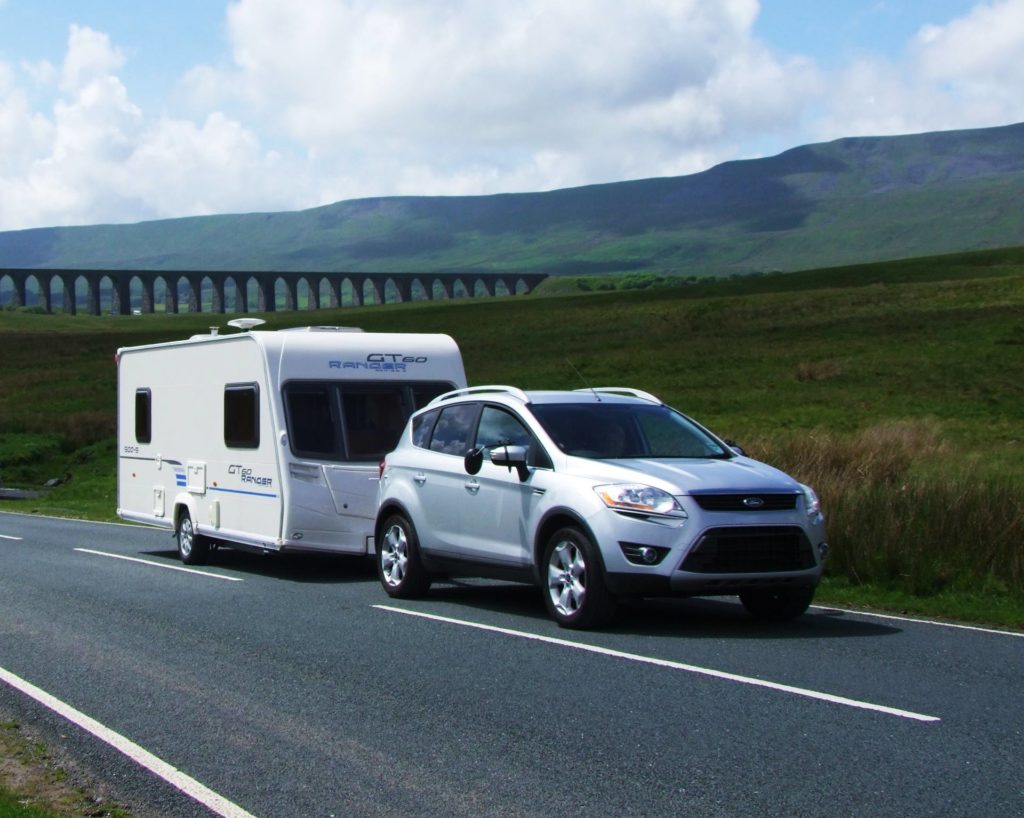
Check that you’re licensed to tow a caravan

Your first step is to look at your UK driving licence issued by the DVLA. If you do not possess the required entitlement then you will be on the wrong side of the law and your insurance will be invalid.
If you passed your driving test and obtained a licence before the end of 1996, then you will have an entitlement to drive a vehicle towing a trailer with a combined maximum weight of 8,250kg. This is known as your Maximum Authorised Mass (MAM).
If you passed your driving test after 1st January 1997 you are legally able to tow a combined weight of car and trailer/caravan of 3,500kg MAM.
If you want to tow a heavier caravan, you will need to apply for and pass a towing test to gain a B+E classification, allowing you to legally drive a combined weight of 7,000kg. Information on these courses can be found through the DVSA.
Choosing the right vehicle to tow a caravan

Always start with a balanced system. A towing vehicle suitable for the size and weight of your caravan is essential. Caravans shouldn’t weigh more that 85% of the tow vehicle’s kerb weight.
To help you choose a suitable car/caravan combination, you can use an online matching service such as TowCheck, which is run by the National Caravan Council.
The service generates a list of suitable caravans that match your car and, vice versa, if you’ve set your heart on a particular caravan that is just right for your needs, you can find the right car to tow it.

You will also need a towbar to tow your caravan.
You need to determine whether you would prefer a permanently fixed or detachable towbar but, either way, it must be type-approved for the particular towcar.
Always check the electrics between tow car and caravan are working prior to moving off and ensure that the breakaway cable – which will apply the brakes on the caravan if it becomes detached from the towcar – is connected.
Make sure you notify your motor insurance company that your car has been fitted with a towbar and that you might be towing.
In the event of an accident, your insurance will then cover any third party damage that might be caused by what you are towing.
Bear in mind, that it will not cover damage to the caravan itself, which will need a separate insurance policy.
Have you seen Touring magazine yet? Our July / August issue has a whopping 128 pages of touring inspiration!
Learn your legal responsibilities when towing a caravan
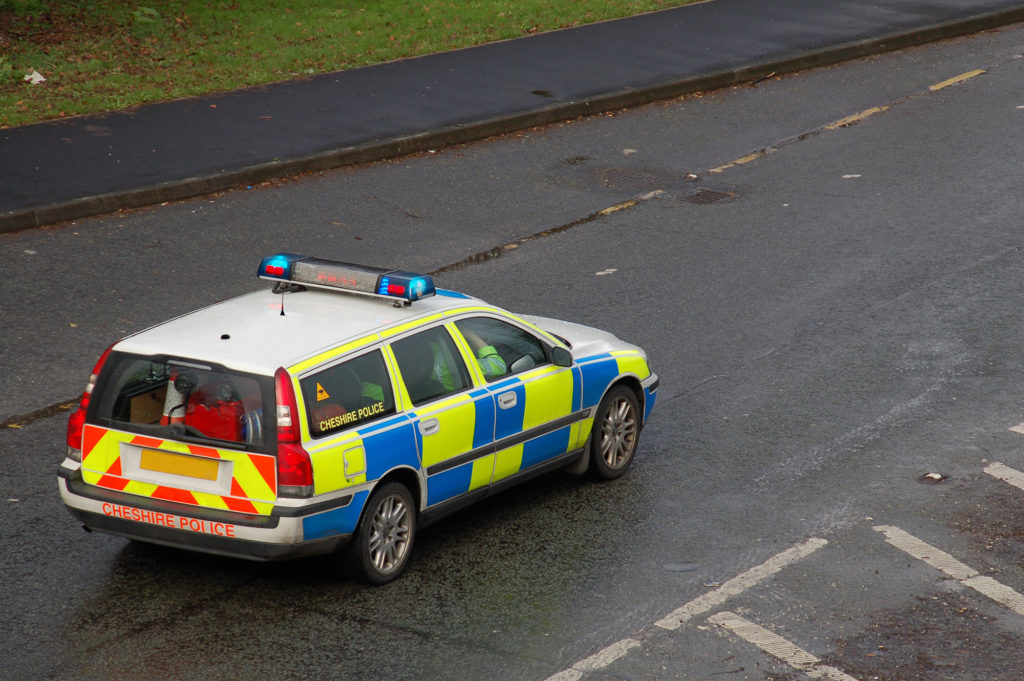
It is important that you are aware of your new legal responsibilities.
When you tow a caravan you will subject to a change in road speed limits. You must not exceed 50MPH on any single carriageway or 60MPH on dual carriageways or motorways.
It is also forbidden to use the outside lane of a motorway or other three lane carriageway.
It is essential that you have good rear visibility down both sides of the caravan while towing and therefore a pair of extension mirrors will be required. These can be purchased from caravan dealerships or outdoor leisure shops.
Learn how to fit them and don’t forget to take the mirrors off once you’ve pitched at a campsite if you’re planning on driving anywhere without the caravan.
Make sure your caravan’s rear light board is always working and check this before setting off on each journey.
A British standard registration plate must be fitted to the rear of your caravan and display the towing vehicle’s registration number. This should be clearly visible and illuminated at night.
You are not permitted to carry passengers in a caravan, while it is being towed on the public highway.
The towing car’s Maximum Permissible Towing Mass (MPTW) must be greater than the Maximum Technically Permitted Laden Mass (MTPLM)
The laden weight of the caravan must be less than the Maximum Technically Permitted Laden Mass (MTPLM), shown on the caravan’s ‘weight plate’. This is the new term for gross weight and is also known as Maximum Authorised Mass (MAM).
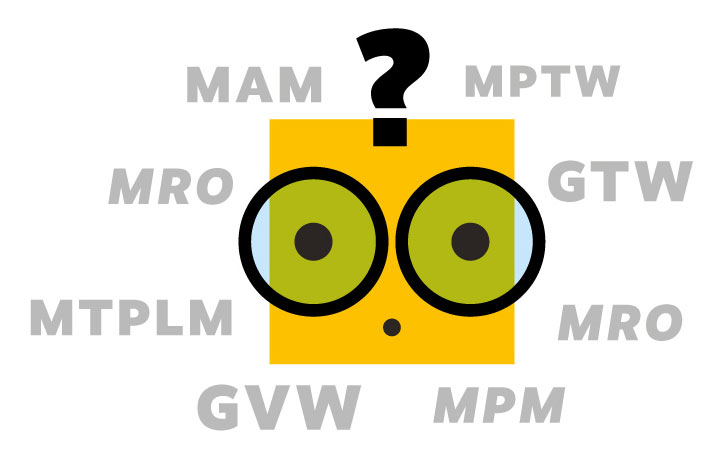
Mass in Running Order (MRO) refers to the unladen weight of the caravan as it left the factory. Make sure you know exactly what items this figure includes, as since 2011 this also accounts for certain items, from gas bottles to batteries, that were previously part of the ‘user payload’.
The Maximum Authorised Mass (MAM) is the weight of the car when it is fully laden, including passengers, luggage, the tow bracket and the caravan’s nose weight.
MAM is sometimes known as the Maximum Permissible Weight (MPW) or Gross Vehicle Weight (GVW)
The laden weight of the car and caravan combined must not be greater than the Gross Train Weight (GTW). This is the maximum permitted weight of car and caravan combined that is specified by the car manufacturer.
Mass in Running Order (MRO) or Kerb Weight normally includes a 90% full fuel tank, and the driver but no load other than standard equipment and does not include the weight of the tow-bracket.
Think differently on the road when towing a caravan
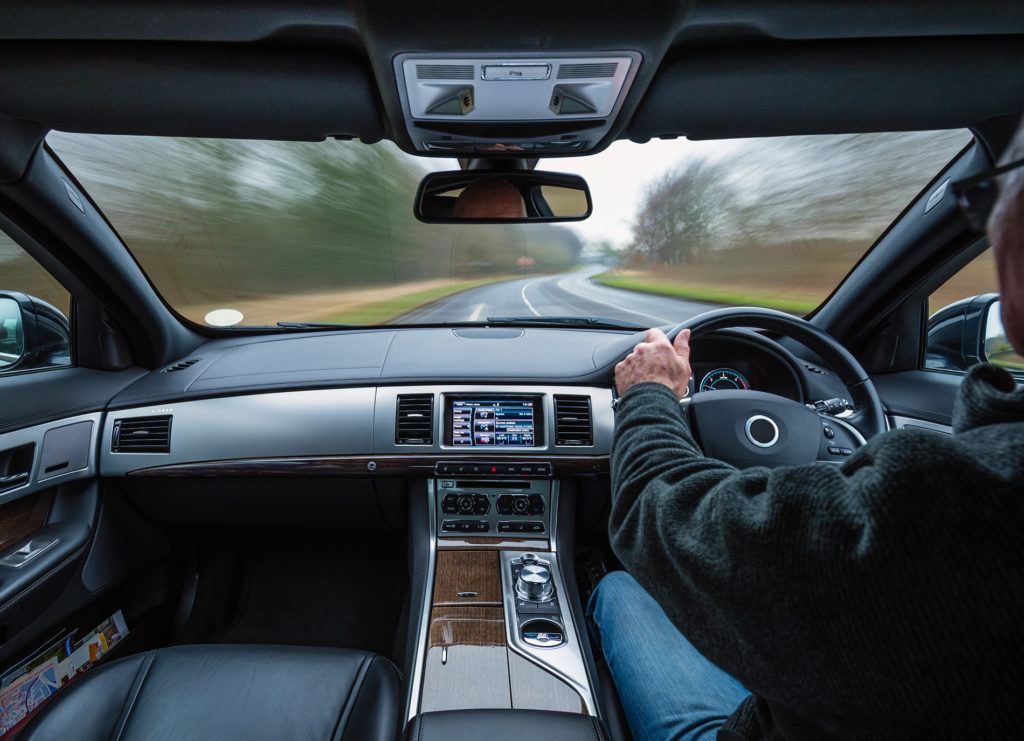
A constant awareness that your caravan is behind you is the most important rule of the road and accidents are often due to complacency.
Regularly check tyre pressures on both caravan and tow vehicle and ensure wheels are tightened to the correct torque.
Towing a caravan requires you to think differently about your driving style, habits and use of the road.
You will need to give yourself more time and space than you would when driving a single vehicle.
This may be stating the obvious, but your acceleration, cornering, turning and perhaps most importantly braking will all be affected by the addition of your new white box!
Courteous driving is important. You are an ambassador for caravanners. If you find that traffic is starting to build up behind you, then pull over when is safe to do so to allow other road users to pass.
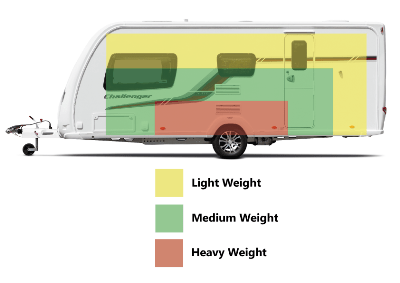
Snaking and pitching are two very worrying and very real hazards for the touring caravanner.
Snaking is the swaying of a caravan when being towed. This side to side movement can be caused by a passing lorry, a crosswind, imperfections on the road surface or excessive speed.
If you feel your caravan is beginning to snake or pitch, remain calm and keep steering in a straight line. Take your feet off the pedals and resist the temptation to brake.
Pitching is when the front end of the caravan moves up and down, pulling at the back of the towing vehicle. This can be best avoided by ensuring your caravan is loaded correctly.
Both snaking and pitching can cause the driver to lose control and lead to an accident.
This should slow your outfit down and allow you to take back control of the situation. Keep in mind that you can also employ engine braking to slow down gradually by shifting down gears incrementally.
Reversing with a caravan
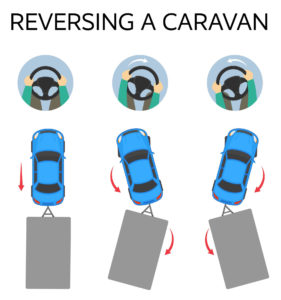
This is one of towing’s hardest skills and perfecting this comes from practice.
If you have a passenger, they can help by getting out looking out for potential hazards while you are reversing. Make sure they stand in a safe place and are always in view. Open your window so you can hear any instructions.
Make sure your towing mirrors are correctly angled and that you have good visibility down both sides of your caravan.
The biggest difference between reversing a caravan compared to a single vehicle, is that due to the laws of physics, you will need to steer in the opposite direction to where you want the caravan to go. This can take some getting used to, especially as you will also be judging space and distance via your mirrors.
At first you will need to fight your instinct and steer in the wrong direction.
Watch how your caravan is moving in relation to your car. At some point you will need to steer in the other direction, or you will jack-knife at right angles to the car.
Use small yet deliberate movements of the steering wheel. Take it slowly and get a feel for it. Don’t be afraid to pull forward and make small corrections to get your angle right.
You will soon get the hang of this and will be slotting into your pitch with ease!
If you are completely new to towing you would be well advised to take some professional tuition. Both the Camping and Caravanning Club and the Caravan and Motorhome Club run introductory courses throughout the UK.
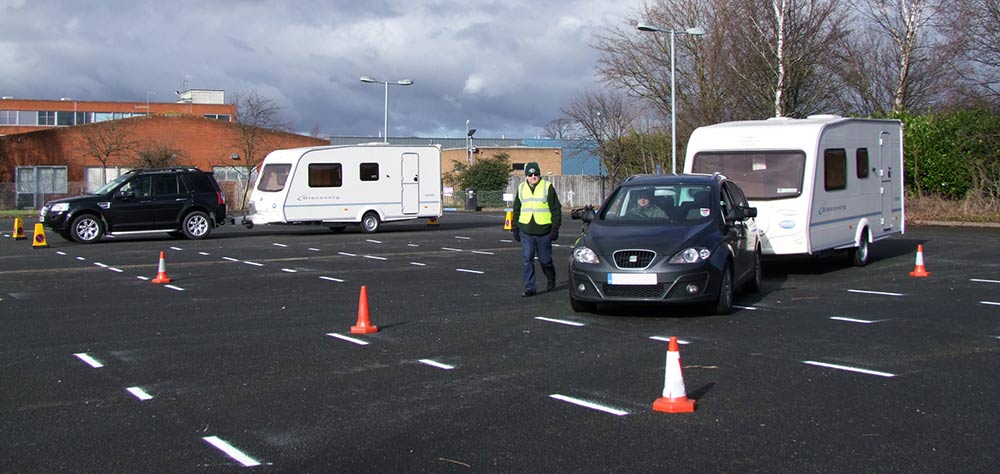
Courses usually last a day and you’ll run through the basics of towing before going outdoors.
As well as training on manoeuvres such as turning corners and reversing. These courses will also go through the practical basics such as hitching up and tips for safe and enjoyable caravanning.
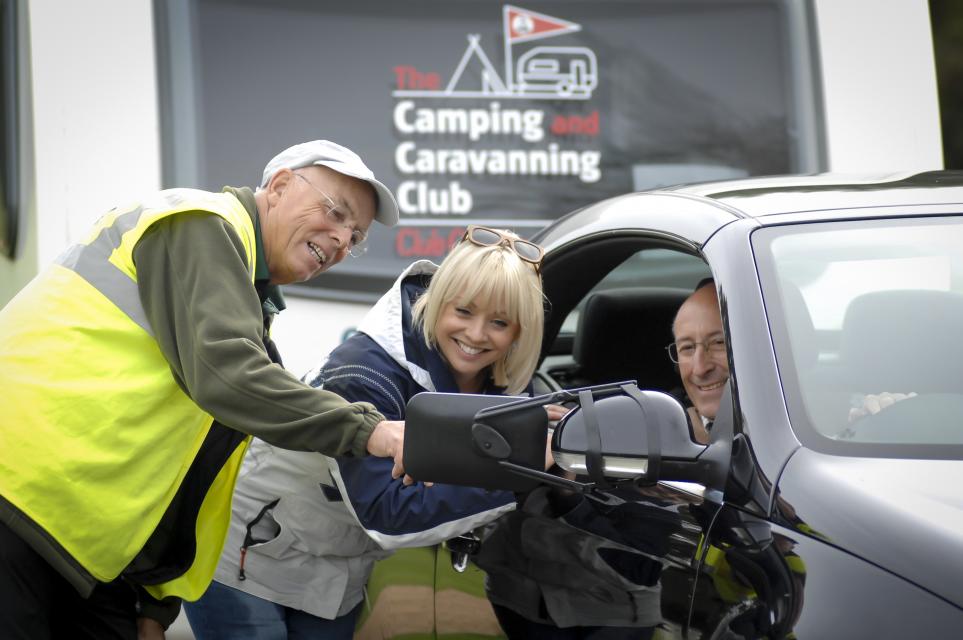
Alternatively, the clubs operate short taster sessions on towing at many of the bigger caravan and camping shows, including those held in Glasgow, Manchester and Birmingham.
Approved Workshop Scheme (AWS) and National Caravan Council support campaign for SAFE towing
The Approved Workshop Scheme (AWS) and National Caravan Council (NCC) are supporting the Driver and Vehicle Standard’s Agency’s (DVSA) new campaign for SAFE towing which launched in May.
It is expected that a lot of caravans that have been rested up during lockdown will be on the road again for the late Spring Bank Holiday (31 May), as restrictions ease across the UK. In addition, with the marked growth in popularity of caravans over the last year, there will be a number of holidaymakers on the road who are new to – or recently returning to – towing a caravan.
So, the message from the Approved Workshop Scheme and the NCC is that if you are towing a caravan, make sure it is SAFE.
S – has it been Serviced recently?
A – have you got enough Air in your tyres? Check pressure, tread depth and condition.
F – have you Fitted the breakaway cable or safety chain and checked electrical connections and cables?
E – How do your lights look, have you Examined them properly? Check load and weight limit, mirrors and do the jockey wheel test before you travel.
Caravans that have not been used frequently can face some common problems with tyres, lights and brakes but it is easy to find a local fixed or mobile workshop on the AWS website or through the AWS app. AWS Manager, Sarah Wigmore advises all caravan owners to book as soon as you can to get your caravan or trailer checked by a professional and to carry out these simple caravan checks before every new journey to get back on the road safely.
For more reviews, practical advice and travel inspiration subscribe to Touring for free!

